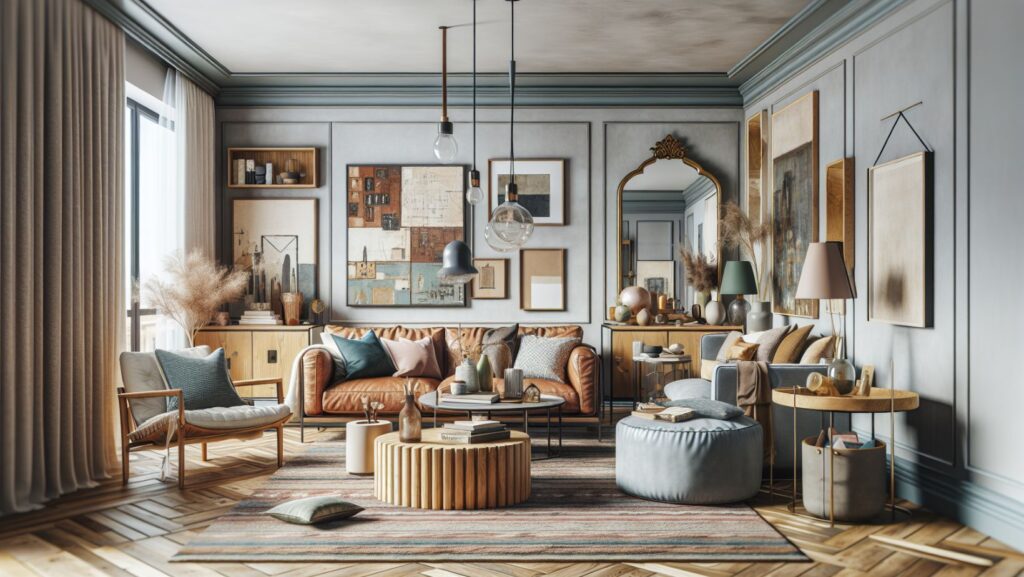Creating a cohesive living room by blending various furniture styles can be both exciting and challenging. This guide will help you navigate through the intricacies of mixing and matching different designs. Discover how to achieve a balanced look that reflects your personal taste.
Mixing and matching furniture styles in your living room allows you to express your unique taste. It’s essential to understand some basic principles to ensure a harmonious blend. This article provides practical tips to help you achieve a stylish and cohesive interior. For those drawn to clean lines and impeded elegance concepts, integrating Modern Classics into your living room provides a sophisticated foundation that balances other eclectic pieces perfectly.
Understanding Your Style Preferences
Your first step is to identify your style preferences, which will guide you in selecting pieces that complement each other. Start by evaluating the existing furniture in your living room. Take note of the dominant styles, colors, and materials present.
Consider creating a mood board with images of furniture that appeal to you. This visual representation will help you see options and identify common elements that can tie different styles together. It’s also useful to research various interior design styles, such as modern, rustic, or eclectic, to determine which ones resonate with you.
Once you have a clear idea of your preferences, think about how you can incorporate new pieces into your existing décor. Aim for a balance between contrasting elements to create a dynamic yet cohesive space. Remember, mixing styles is about finding harmony in diversity.
Balancing Color Schemes And Textures
Color schemes play a crucial role in harmonizing different furniture styles. Start by choosing a base color that will act as a unifying element throughout your living room.

Neutral tones like beige, gray, or white are versatile options that can complement various designs.
Add pops of color through accessories such as cushions, rugs, and artwork. These accents can tie different pieces together and provide visual interest. Additionally, consider the textures of your furniture. Mixing materials like wood, metal, and fabric adds depth and dimension to your space.
It’s also important to ensure that the textures complement rather than clash with each other. For instance, pairing a sleek leather sofa with a rustic wooden coffee table can create an appealing contrast. Remember to keep the overall balance in mind when introducing new elements.
Selecting Statement Pieces
A well-chosen statement piece can anchor your living room and set the tone for the rest of the décor. Look for unique items that reflect your personality and serve as focal points in the room. This could be an eye-catching armchair, an ornate mirror, or a bold piece of art.
When selecting statement pieces, consider their impact on the overall aesthetic of your living room. Ensure they complement the existing furniture while adding an element of surprise or intrigue. The goal is to create a cohesive look without overwhelming the space.

Additionally, think about how these pieces will interact with other elements in the room. For example, placing a vintage armchair next to a modern sofa can create an interesting juxtaposition that enhances the overall design.
Creating Harmony With Accessories
Accessories are the finishing touches that bring your mixed-style living room together. Use items like throw pillows, blankets, vases, and lamps to add layers of texture and color. These small details can make a big difference in creating a unified look.
When choosing accessories, opt for items that complement both the old and new pieces in your living room. This helps bridge any gaps between different styles and creates a sense of continuity throughout the space.
Experiment with different arrangements until you find a setup that feels balanced and inviting. Accessories provide an opportunity to inject personal touches into your décor while enhancing its overall appeal.
